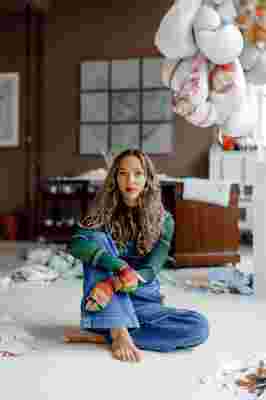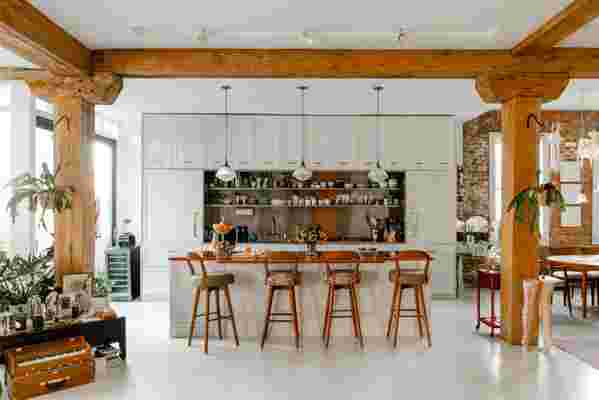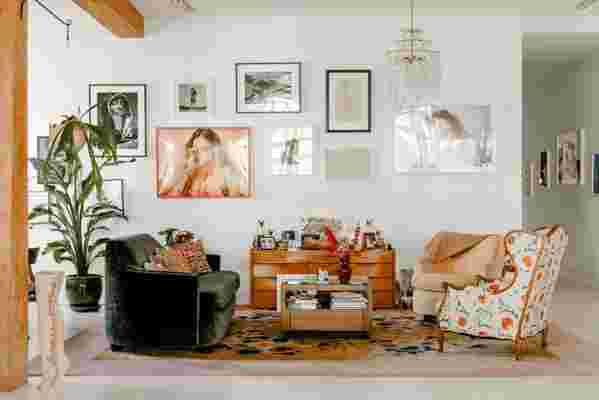Artist Zoë Buckman’s Brooklyn Loft Embodies Her Creative Outlook
In her work, artist Zoë Buckman uses lacy textiles and lingerie to make statements on femininity, race, and culture. Each piece, whether it’s an embroidered hip-hop lyric or an impression of her own body, contains a push-pull between the masculine and feminine, the hard and the soft, the chaotic and the still. For one series, she constructs boxing gloves from soft vintage floral fabrics— then hangs them from hard metal chains.
In her home in Brooklyn’s waterfront Dumbo neighborhood, the same dichotomy is at play, because, well, it’s chockablock with her own artwork, and for good reason: She works from home too. “It was super-important to me that I would be able to make work out of my home,” she says of the space, which is part studio, part gallery. (Her current public exhibition, Heavy Rag , is on display at Fort Gansevoort in Manhattan.) “I knew I wouldn't be able to afford to rent a studio as well as get a home that I was excited about. So I was like, if I can do both in one, I can just about make it work.”

Buckman surrounds herself with her own art in her apartment. “It’s a sentimental thing, to have an actual piece that was hanging in a show,” she says. “It takes on the memories of that experience of that body of work, of making that body of work, of what I was going through at the time I was creating it.”
So, two years ago, she moved into the Brooklyn loft and hired an architect—but not a decorator. Instead, she scoured Etsy , eBay , and 1stdibs , where she found a silk rug that inspired the pinks, yellows, blues, and greens that appear throughout the space. (The rug eventually found a permanent residence on the living room floor.) Her own art, and trades from other artist friends—“a perk of the job,” she says—line the walls.
Carving out walled rooms was tempting, but in the end, Buckman decided to follow the light and stick to an open format. “If I was to create some kind of partition, that would mean that the space that I lived in wouldn’t have as much natural light,” she says. “So I decided that they wouldn't be any partition or literal separation between my kitchen and living area and my studio.”


Which means that figuratively, too, there’s little separation. “My work is always on display, and my life is always on display when I make my work,” she says. The upside is convenience, and aside from being able to work jet-lagged in her pajamas at 2 a (Buckman grew up in the U.K.), she also gets to share her work with her daughter, Cleo. “It’s started some really interesting and important conversations because a lot of my work comes from a difficult or painful place, and a lot of it is also autobiographical,” Buckman says. “So she'll come in and be like, ‘Oh, what are you working on there?’ And if it's a piece with text, she'll read out loud and then she'll go, "Well what happened there, mum?" It's really amazing.”
The ultimate resource for design industry professionals, brought to you by the editors of Architectural Digest
But that’s not to say she’s always working. When the pair need to unwind, they’re just, well, living in the space, sipping tea and sharing biscuits in Buckman’s bed. “She's now trained to bring me tea and biscuits in bed, which, oh, my God, changed my life,” Buckman says with a laugh. “Once I got that down I was like, okay, this is winning.”